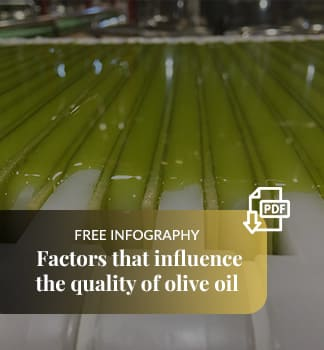On many occasions, we are arriving at the end of May in Spain suffering periods of temperatures about 5ºC higher than the average for those dates. Depending on the elevation above sea level, there will be olive trees in the moment of setting new fruits, opening the flower or developing the inflorescences.
The most damaged olive groves will be those that had a few days left to open the flower, and those that are in the moment of opening it.
What will the damage consist of and why?
Most olive growers will say that pollen loses fertility and that is the way it is, and that with high temperatures and solar radiation it has a shorter viability.
But we must bear in mind that much of the olive flower is self-fertilizing, so the pollen activity does not have a very high component in the final fruit set.
Let's say rather that the quality of female structures is the one that transcends the most in production.
With high temperatures days before flowering, the development of inflorescences shoots up, but there is a lot of pistillary abortion: many of the flowers that will open before their time, will do so as male flowers that only produce pollen.
With high temperatures and low humidity in full bloom, the stigma of the flower dehydrates, making fertilization impossible, either by own or external pollen, not producing fruit set and losing the future olive.
Olivo en plena floración. ESAO
Once flowering is over, during fruit setting, high temperatures and low humidity lower the hydric status of the olive tree and cause the tree itself to discard many more fruits than it would discard with good temperature and humidity conditions.
Last year in Spain we had two episodes of temperatures much higher than normal around flowering. Depending on the elevation above sea level where the olive grove is located, it has caught it at one or another phenological moment.
When we see dried flowers that have thrown away the petals, it is usually because they did not have viable or fertilized ovaries. This occurs due to water, thermal, nutritional stress and prays. In olive trees with a good flowering situation, almost the entire flower usually sets and the dry petals fall well, so we do not see the dreaded dried flowers stuck together.
Detail of dried flowers. ESAO
For all organisms, the temperature of 35ºC is a turning point. Above this temperature, most organisms do not have effective physiological mechanisms to counteract stress with little energy cost.
The olive tree is a plant with a Mediterranean climate, and in summer it can withstand this temperature quite well. However, around flowering, the olive tree is in a critical moment and temperatures of even 30ºC seriously affect flowering.
The factor most correlated with the final harvest is none other than the number of fertile flowers in the olive tree. We already know that the olive tree produces fertile hermaphrodite, staminate flowers, which come with the preformed "little olive", and others, which are male, vain, that only bring pollen.
The olive tree sets between 2 and 5% of its flowers. In other words, in a sprout, the olives in autumn are only between 2 and 5% of the flowers there were.
That is why the olive tree can tolerate a lot of flower loss due to biotic and abiotic agents: prays, milkweed, water and thermal stress, etc.
Depending on the status of the flowering olive tree, this is how the final harvest will roughly be. Olives that have reached flowering with low resources, will mainly have male flowers, which in the end will be in little harvest, whether or not harmful external agents intervene.
On the other hand, olive trees with good reserves, without competition from grass, pruned, etc., produce many large inflorescences with many fertile flowers. If there were hardly any external agents that reduce the flower population, in the end the olive tree itself is the one that discards most of the olives before the hardening of the stone. But if there is a heat wave or second-generation prays, this loss of flower will not translate into production losses, since the olive tree loses flowers that later by itself would have already discarded as June olives.
Olive tree in magnificent condition. ESAO.
In summary: the best harvest insurance is to have the olive grove well cared throughout the year so that it reaches "excess" flowering.
.png)





